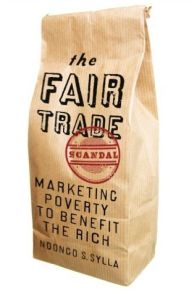Join getAbstract to access the summary!

Join getAbstract to access the summary!
Ndongo Sylla
The Fair Trade Scandal
Marketing Poverty to Benefit the Rich
Ohio University Press, 2014
What's inside?
Is fair trade really fair?
Recommendation
Development economist Ndongo S. Sylla studied fair trade’s place in the international trade universe. He reports that fair trade, which began with high ethical hopes, has made the lives of poor workers worse. Neoliberalism, “tariffication,” supply chain pressures, and labeling and brand confusion have diluted the fair trade movement’s intended impact. Sylla focuses on the least developed countries (LDCs) and details the free market’s destructive role in deepening the divide between North and South. The author’s understandable frustration does not compromise his incisive analysis, which comes through despite the book’s often-dense prose. getAbstract recommends his perspectives to executives, policy makers, activists and enlightened consumers searching for insights into the problems of the South’s economies.
Summary
About the Author
Ndongo S. Sylla, a PhD in development economics, is a researcher at the Rosa Luxemburg Foundation office in Dakar, Senegal.


















Comment on this summary